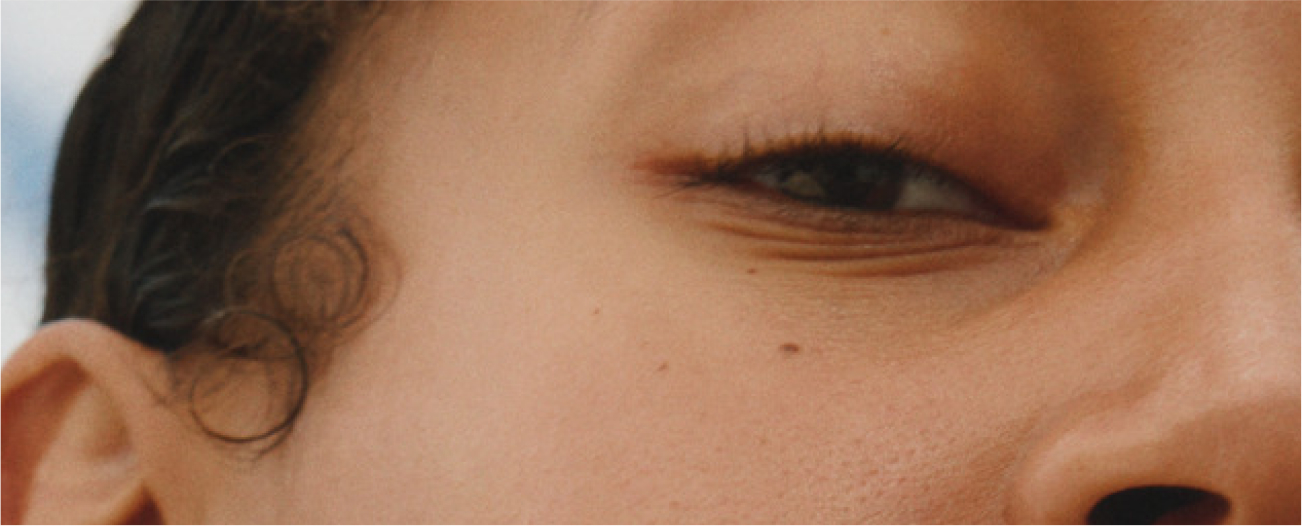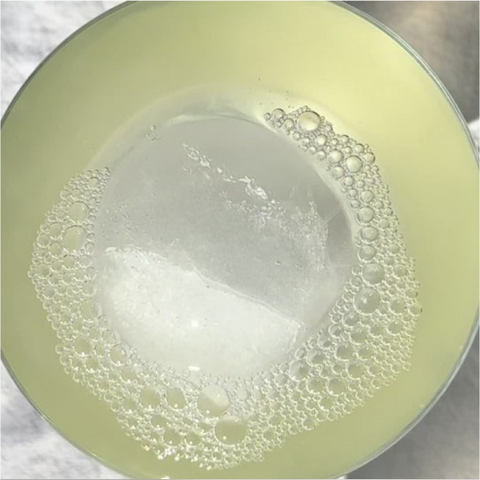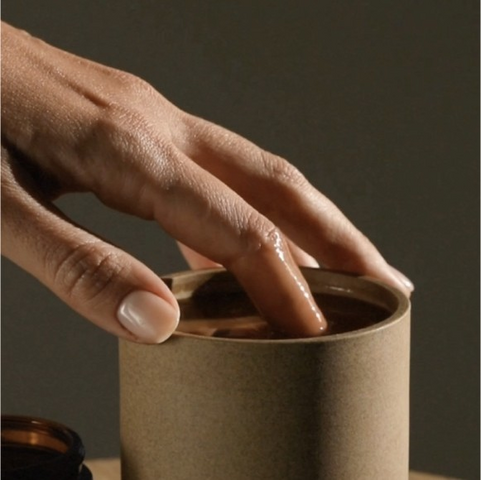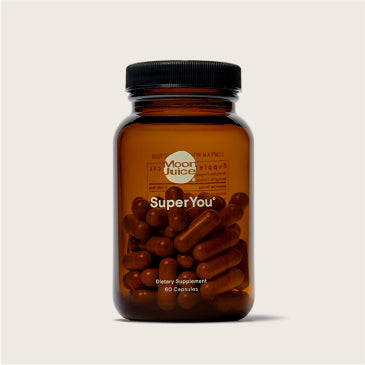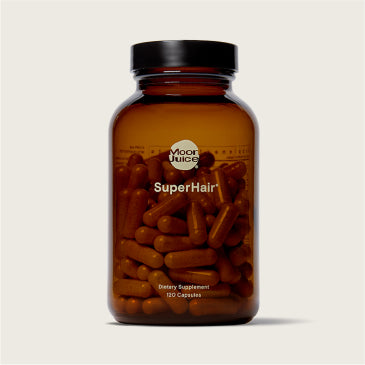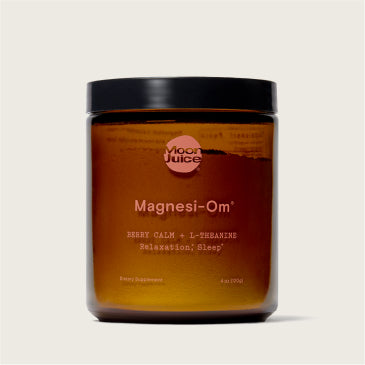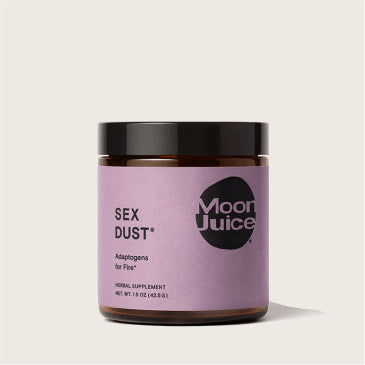Michele Ross is a freelance writer based in Los Angeles. She primarily covers beauty, wellness, nutrition, and culture, and her goal is to empower readers to make informed decisions about their routines. Both on and off the clock, she geeks out on skin care ingredient deep dives, astrology, and K-pop.
Exfoliating is a non-negotiable in many skin care routines. The benefits of exfoliating are manifold. Depending on the type of exfoliant you opt for — and as long as it’s right for your skin condition and concerns — you can expect the likes of more even skin tone and texture, less prominent fine lines and wrinkles, fewer breakouts, and radiance to boot. Exfoliants are powerful in more ways than one: Yes, they can certainly advance your skin goals, but there can be too much of a good thing. Enter: over-exfoliation.
In this comprehensive guide to over-exfoliated skin, you’ll discover the telltale signs and tips to help your complexion bounce back in no time. And later: your FAQs, answered.
What Is Over-Exfoliation?
Over-exfoliation is exactly what it sounds like— exfoliating too much. It can be applying physical exfoliants with too much pressure, exfoliating your face too frequently, or using a physical or chemical exfoliant that’s too potent for your skin’s tolerance.
The primary purpose of exfoliation is to get rid of the buildup of dead skin cells on the skin’s surface (and sometimes within the pores). Sweeping these dead cells away stimulates skin cell turnover, which leads to the benefits shared above and others. Skin cell turnover can slow down for several reasons — including the simple passage of time — which illustrates how advantageous skin exfoliation can be.
However, over-exfoliating runs the risk of doing more harm than good, potentially leading to tight, dry skin or skin barrier damage.
Signs of Over Exfoliation
Not sure if you over-exfoliated your face? If you experience any one of these signs — or even a combination thereof — there’s a good chance you or your exfoliating product went overboard.
Redness
Looking at a red and ruddy complexion? No matter if you’re usually prone to redness or if you rarely deal with this complexion concern, this discoloration is a clear sign of over-exfoliation. The last thing you want is skin damage. Cut back on your exfoliation if you’re experiencing redness or sensitivity.
Irritation
Some chemical exfoliants elicit a tingling sensation, which can be normal and indicate that the product is working to yield the benefits. As long as it’s not painful and doesn’t sting, this isn’t cause for concern. Yet if you choose a chemical exfoliant that’s wrong (or too strong) for your skin, peeling and burning can occur. These manifestations of irritation are a no-go for a healthy skin barrier and all point to an over-exfoliated face.
Dryness
You might experience dryness on a daily basis, or maybe it’s just a once-in-a-while kind of deal. In either case, if your complexion is more parched and tighter than usual, it may be caused by excessive exfoliation. The same goes if you have a few dry patches versus dry skin all over.
Breakouts
There are specific chemical exfoliants — namely Salicylic Acid (a BHA) and Glycolic Acid (an AHA) — that can work wonders to improve non-cystic acne. That said, you wouldn’t expect these acids to work in the opposite way… but excessive exfoliation has the potential to do just that. When you strip your skin by exfoliating too much or too strongly, the resulting dryness can trigger the overproduction of sebum as compensation. Increased sebum production is one of the core contributors to the formation of breakouts.
Though everyone should be vigilant against over-exfoliating, those with acne-prone and/or oily skin should be especially cautious. They may not realize this skin care step — which they can often tolerate in stronger measure and more frequently than those with dry or sensitive skin — can exacerbate, rather than help remedy, their chief concerns.
How to Heal Over Exfoliated Skin
Of course, you’ll want to prevent over-exfoliation before it rears its head. (Stay tuned, as we’ll cover key tips on how to do so in the next section.) However, if you need to do damage control right now, you can start to remedy your complexion by heeding the following steps:
-
Pare down your routine. When you have over-exfoliated skin, simplifying your skincare routine is the name of the healing game. Shelf the active ingredients — which includes exfoliants but also power players like Vitamin C, Retinol/Retinoids, and Benzoyl Peroxide — until your complexion is back in balance. Meanwhile, you’ll also need to take a less-is-more approach.
-
Use gentle skincare products only. Slow and steady wins the race to remedy over-exfoliated skin. The last thing you’ll want to do is irritate your skin even more as you’re trying to get it on the upswing. As such, a gentle cleanser and a natural moisturizing face cream is typically enough to do the trick until your skin barrier heals. (Of course, during the daytime, you’ll need to seal the deal with mineral sunscreen. Unprotected and/or excess exposure to UV rays isn’t your skin’s friend, especially where over-exfoliation is concerned.) When possible, opt for products that can hydrate, calm, restore, and replenish the skin barrier. Think: Hyaluronic Acid (HA), Ceramides, and Essential Fatty Acids, the last of which is a wonderful ingredient to prioritize in a dewy moisturizer. Moreover, it pays to invest in non-toxic products with vetted barrier-friendly ingredients that nix aggressors like sulfates, parabens, and silicones.
Tips for Preventing Over Exfoliation
Proactivity equals protection when it comes to any aspect of your health, with skin health absolutely included. That said, be sure to follow these crucial tips to avoid over-exfoliating your skin.
Choose the Best Exfoliant for Your Needs
Physical and chemical exfoliators are two of the most common types of skin exfoliation. Physical exfoliators (think: facial scrubs, microdermabrasion, ultrasonic devices, washcloths, etc.) might show immediate benefits straight away… but they’re also known to yield the undesired signs of over-exfoliating detailed above. Many physical exfoliators are too gritty, jagged, or generally abrasive, which is why a thoughtfully formulated chemical exfoliator can be superior.
Acid Potion utilizes the power of a 25% AHA + BHA complex — consisting of Glycolic Acid, Lactic Acid, and Salicylic Acid (derived from Willow Bark) — to help remove dead skin cells, stimulate collagen production, and unclog pores. This liquid exfoliator goes the extra mile to keep you glowing, sans irritation, courtesy of replenishing Niacinamide (Vitamin B3) and hydrating adaptogenic Reishi.
Slowly Integrate Exfoliants in Your Routine
This step is key, no matter if you’re new to exfoliating at large or simply a given exfoliating product. As far as the ideal cadence goes, be sure to read the instructions on the product page and packaging to know how often to exfoliate. Some exfoliants are suitable only for weekly use, while some can be used a few times a week or even daily. In any case, kicking off with a once-weekly application and increasing based on tolerance is a safe bet. (To prevent over-exfoliated skin, be familiar with what your skin can handle and always honor that.)
Be Mindful of Product Pairings
Since exfoliants are among the most potent skin care products available, it’s important to keep these heavyweights separate from other power players. Again, these cover anything with active ingredients including but not limited to Vitamin C, Retinol, and prescription Retinoids. Avoid applying two or more actives in a single regimen. Instead, space them out from one day (or every few days) to the next, or switch off between morning and nightly use.
Tip: Since exfoliants are photosensitizing, do your skin a solid by applying them at night.
Hydrate, Moisturize, and Protect
To truly ace your skin care routine and prevent the pangs of over-exfoliation, round out the rest of your line up with gentle, barrier-repairing, and protective products. Exfoliants play very well with hydrating serums and emollient moisturizers. And never forget to apply SPF each morning, taking care to reapply throughout the day as needed.
Over Exfoliation FAQs
How long does it take over exfoliated skin to heal?
Good news: It typically doesn't take too long to heal an over-exfoliated face. Recovery times will vary based on various factors (e.g., your skin’s sensitivity/tolerance, how strong the exfoliant was, what you do or don’t do after over-exfoliating, etc.). However, in mild cases, your skin barrier can recover in as little as 24 hours. Skin irritation may last up to a few days or even a few weeks. Heed the tips above — as well as avoid overheating, by way of hot showers, saunas, excess physical activity, and the like — to expedite the timeline.
Should I moisturize over exfoliated skin?
Yes — so long as you choose the right moisturizer. Those that pack ingredients that are known to replenish and repair the moisture barrier (e.g., Ceramides and Fatty Acids) are your best bet for protection.
Can I use Hyaluronic Acid on over-exfoliated skin?
In many cases, Hyaluronic Acid can be helpful to restore hydration in over-exfoliated skin. You can reap even greater benefits by opting for a natural Hyaluronic Acid serum that packs additional ingredients to restore and calm your complexion. For instance, the HA in Plump Jelly is complemented by Silver Ear Mushroom (to form a flexible hydrating film on the skin), adaptogenic Reishi (to tame irritation by nourishing the skin barrier), and Vitamin E via Tocos (to soften, retain moisture, and protect against oxidative damage).
Just take care to avoid formulations with irritating additives. All the while, remember to keep things simple and cease application if your over-exfoliated face remains highly sensitive.
Sign Up, Nerd Out
Get wellness tips, education, and recipes
delivered straight to your inbox.
Get wellness tips, education,
and recipes delivered
straight to your inbox.
Takeaways
Over-exfoliated skin can manifest as the telltale signs of redness, burning, dryness, and breakouts — i.e., nothing you’d willingly subject your complexion to. To ensure that chemical exfoliators yield their intended benefits, choose wisely with the product and frequency. So long as you follow these crucial tips, you can keep over-exfoliation at bay and enjoy a radiant, balanced, and clear complexion.
Exfoliating is a non-negotiable in many skin care routines. The benefits of exfoliating are manifold. Depending on the type of exfoliant you opt for — and as long as it’s right for your skin condition and concerns — you can expect the likes of more even skin tone and texture, less prominent fine lines and wrinkles, fewer breakouts, and radiance to boot. Exfoliants are powerful in more ways than one: Yes, they can certainly advance your skin goals, but there can be too much of a good thing. Enter: over-exfoliation.
In this comprehensive guide to over-exfoliated skin, you’ll discover the telltale signs and tips to help your complexion bounce back in no time. And later: your FAQs, answered.
What Is Over-Exfoliation?
Over-exfoliation is exactly what it sounds like— exfoliating too much. It can be applying physical exfoliants with too much pressure, exfoliating your face too frequently, or using a physical or chemical exfoliant that’s too potent for your skin’s tolerance.
The primary purpose of exfoliation is to get rid of the buildup of dead skin cells on the skin’s surface (and sometimes within the pores). Sweeping these dead cells away stimulates skin cell turnover, which leads to the benefits shared above and others. Skin cell turnover can slow down for several reasons — including the simple passage of time — which illustrates how advantageous skin exfoliation can be.
However, over-exfoliating runs the risk of doing more harm than good, potentially leading to tight, dry skin or skin barrier damage.
Signs of Over Exfoliation
Not sure if you over-exfoliated your face? If you experience any one of these signs — or even a combination thereof — there’s a good chance you or your exfoliating product went overboard.
Redness
Looking at a red and ruddy complexion? No matter if you’re usually prone to redness or if you rarely deal with this complexion concern, this discoloration is a clear sign of over-exfoliation. The last thing you want is skin damage. Cut back on your exfoliation if you’re experiencing redness or sensitivity.
Irritation
Some chemical exfoliants elicit a tingling sensation, which can be normal and indicate that the product is working to yield the benefits. As long as it’s not painful and doesn’t sting, this isn’t cause for concern. Yet if you choose a chemical exfoliant that’s wrong (or too strong) for your skin, peeling and burning can occur. These manifestations of irritation are a no-go for a healthy skin barrier and all point to an over-exfoliated face.
Dryness
You might experience dryness on a daily basis, or maybe it’s just a once-in-a-while kind of deal. In either case, if your complexion is more parched and tighter than usual, it may be caused by excessive exfoliation. The same goes if you have a few dry patches versus dry skin all over.
Breakouts
There are specific chemical exfoliants — namely Salicylic Acid (a BHA) and Glycolic Acid (an AHA) — that can work wonders to improve non-cystic acne. That said, you wouldn’t expect these acids to work in the opposite way… but excessive exfoliation has the potential to do just that. When you strip your skin by exfoliating too much or too strongly, the resulting dryness can trigger the overproduction of sebum as compensation. Increased sebum production is one of the core contributors to the formation of breakouts.
Though everyone should be vigilant against over-exfoliating, those with acne-prone and/or oily skin should be especially cautious. They may not realize this skin care step — which they can often tolerate in stronger measure and more frequently than those with dry or sensitive skin — can exacerbate, rather than help remedy, their chief concerns.
How to Heal Over Exfoliated Skin
Of course, you’ll want to prevent over-exfoliation before it rears its head. (Stay tuned, as we’ll cover key tips on how to do so in the next section.) However, if you need to do damage control right now, you can start to remedy your complexion by heeding the following steps:
-
Pare down your routine. When you have over-exfoliated skin, simplifying your skincare routine is the name of the healing game. Shelf the active ingredients — which includes exfoliants but also power players like Vitamin C, Retinol/Retinoids, and Benzoyl Peroxide — until your complexion is back in balance. Meanwhile, you’ll also need to take a less-is-more approach.
-
Use gentle skincare products only. Slow and steady wins the race to remedy over-exfoliated skin. The last thing you’ll want to do is irritate your skin even more as you’re trying to get it on the upswing. As such, a gentle cleanser and a natural moisturizing face cream is typically enough to do the trick until your skin barrier heals. (Of course, during the daytime, you’ll need to seal the deal with mineral sunscreen. Unprotected and/or excess exposure to UV rays isn’t your skin’s friend, especially where over-exfoliation is concerned.) When possible, opt for products that can hydrate, calm, restore, and replenish the skin barrier. Think: Hyaluronic Acid (HA), Ceramides, and Essential Fatty Acids, the last of which is a wonderful ingredient to prioritize in a dewy moisturizer. Moreover, it pays to invest in non-toxic products with vetted barrier-friendly ingredients that nix aggressors like sulfates, parabens, and silicones.
Tips for Preventing Over Exfoliation
Proactivity equals protection when it comes to any aspect of your health, with skin health absolutely included. That said, be sure to follow these crucial tips to avoid over-exfoliating your skin.
Choose the Best Exfoliant for Your Needs
Physical and chemical exfoliators are two of the most common types of skin exfoliation. Physical exfoliators (think: facial scrubs, microdermabrasion, ultrasonic devices, washcloths, etc.) might show immediate benefits straight away… but they’re also known to yield the undesired signs of over-exfoliating detailed above. Many physical exfoliators are too gritty, jagged, or generally abrasive, which is why a thoughtfully formulated chemical exfoliator can be superior.
Acid Potion utilizes the power of a 25% AHA + BHA complex — consisting of Glycolic Acid, Lactic Acid, and Salicylic Acid (derived from Willow Bark) — to help remove dead skin cells, stimulate collagen production, and unclog pores. This liquid exfoliator goes the extra mile to keep you glowing, sans irritation, courtesy of replenishing Niacinamide (Vitamin B3) and hydrating adaptogenic Reishi.
Slowly Integrate Exfoliants in Your Routine
This step is key, no matter if you’re new to exfoliating at large or simply a given exfoliating product. As far as the ideal cadence goes, be sure to read the instructions on the product page and packaging to know how often to exfoliate. Some exfoliants are suitable only for weekly use, while some can be used a few times a week or even daily. In any case, kicking off with a once-weekly application and increasing based on tolerance is a safe bet. (To prevent over-exfoliated skin, be familiar with what your skin can handle and always honor that.)
Be Mindful of Product Pairings
Since exfoliants are among the most potent skin care products available, it’s important to keep these heavyweights separate from other power players. Again, these cover anything with active ingredients including but not limited to Vitamin C, Retinol, and prescription Retinoids. Avoid applying two or more actives in a single regimen. Instead, space them out from one day (or every few days) to the next, or switch off between morning and nightly use.
Tip: Since exfoliants are photosensitizing, do your skin a solid by applying them at night.
Hydrate, Moisturize, and Protect
To truly ace your skin care routine and prevent the pangs of over-exfoliation, round out the rest of your line up with gentle, barrier-repairing, and protective products. Exfoliants play very well with hydrating serums and emollient moisturizers. And never forget to apply SPF each morning, taking care to reapply throughout the day as needed.
Over Exfoliation FAQs
How long does it take over exfoliated skin to heal?
Good news: It typically doesn't take too long to heal an over-exfoliated face. Recovery times will vary based on various factors (e.g., your skin’s sensitivity/tolerance, how strong the exfoliant was, what you do or don’t do after over-exfoliating, etc.). However, in mild cases, your skin barrier can recover in as little as 24 hours. Skin irritation may last up to a few days or even a few weeks. Heed the tips above — as well as avoid overheating, by way of hot showers, saunas, excess physical activity, and the like — to expedite the timeline.
Should I moisturize over exfoliated skin?
Yes — so long as you choose the right moisturizer. Those that pack ingredients that are known to replenish and repair the moisture barrier (e.g., Ceramides and Fatty Acids) are your best bet for protection.
Can I use Hyaluronic Acid on over-exfoliated skin?
In many cases, Hyaluronic Acid can be helpful to restore hydration in over-exfoliated skin. You can reap even greater benefits by opting for a natural Hyaluronic Acid serum that packs additional ingredients to restore and calm your complexion. For instance, the HA in Plump Jelly is complemented by Silver Ear Mushroom (to form a flexible hydrating film on the skin), adaptogenic Reishi (to tame irritation by nourishing the skin barrier), and Vitamin E via Tocos (to soften, retain moisture, and protect against oxidative damage).
Just take care to avoid formulations with irritating additives. All the while, remember to keep things simple and cease application if your over-exfoliated face remains highly sensitive.
Takeaways
Over-exfoliated skin can manifest as the telltale signs of redness, burning, dryness, and breakouts — i.e., nothing you’d willingly subject your complexion to. To ensure that chemical exfoliators yield their intended benefits, choose wisely with the product and frequency. So long as you follow these crucial tips, you can keep over-exfoliation at bay and enjoy a radiant, balanced, and clear complexion.

